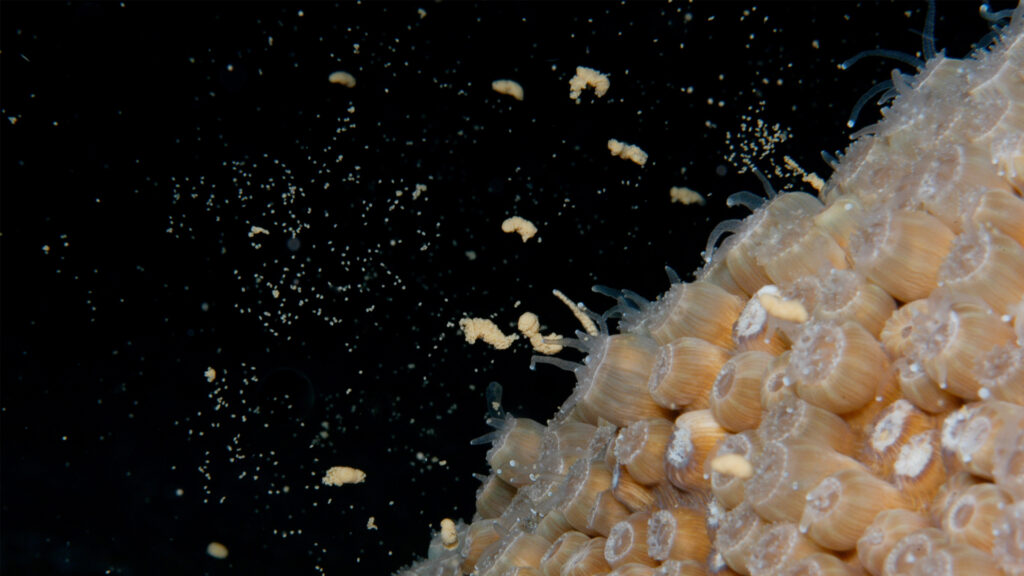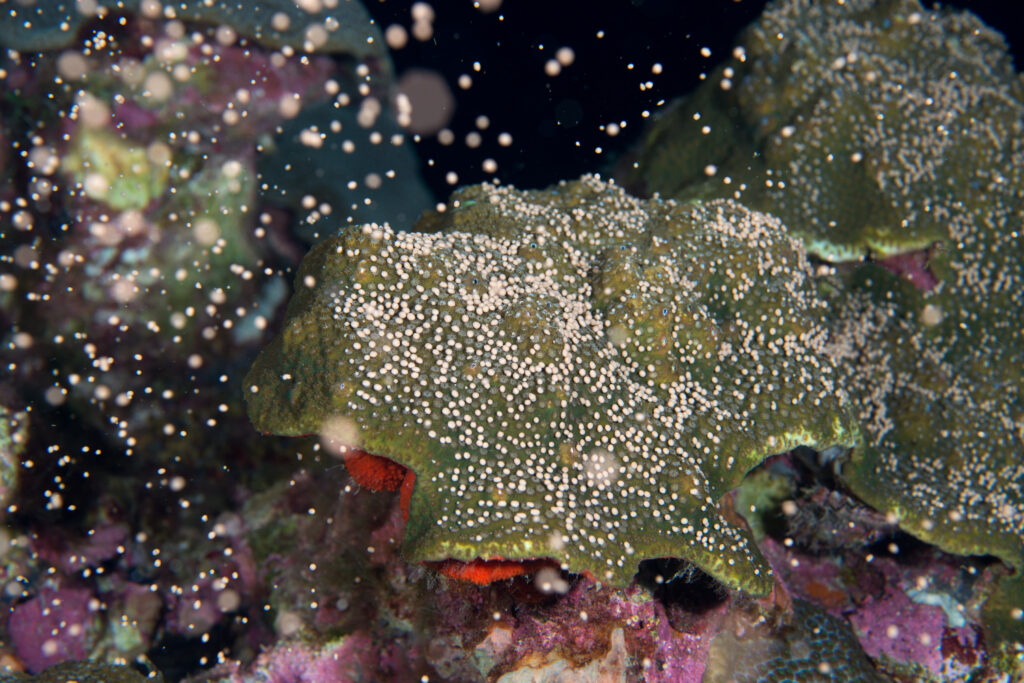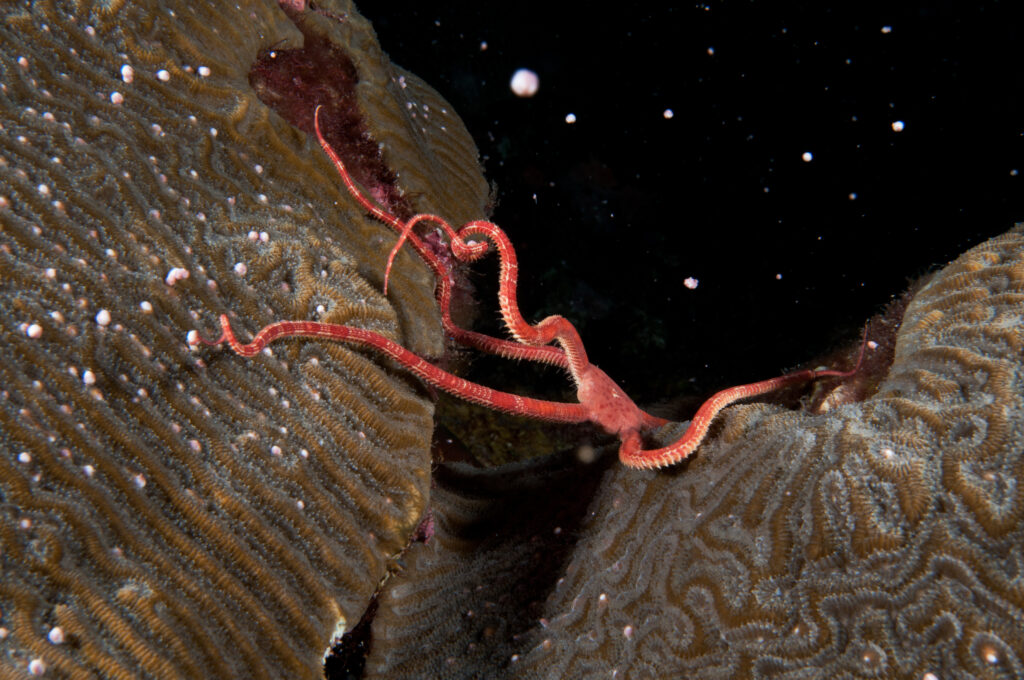This story was originally published by The Revelator, an initiative of the Center for Biological Diversity.
Coral reefs support vibrant marine ecosystems, stimulate tourism and fishing industries, and protect shorelines from tropical storms and erosion. But reefs around the globe have been hit hard by pollution, overfishing and climate change, which is causing increasingly frequent and severe coral bleaching. Scientists predict severe bleaching on 99% of the world’s reefs within this century unless we reduce greenhouse gas emissions. Saving coral reefs requires major systemic changes — dramatic cuts in energy consumption, switching to renewable energy, managing overfishing and pollution, and restoring target reefs.
Restoration efforts have now become a priority for many scientists. This series looks at some of those efforts.
Along Florida’s coast, multiple coral restoration projects have hundreds of people painstakingly attaching thousands of coral fragments to acres of endangered reefs. These efforts are yielding impressive results, but they won’t be enough — especially now, in the face of unprecedented high sea temperatures, as some projects scramble to rescue corals from in-water nurseries.
Other projects have successfully coaxed corals to reproduce sexually in laboratory settings. But that approach, while important, remains costly and limited in scope.

Another option is boosting natural sexual reproduction of corals. Many corals reproduce sexually through broadcast spawning — a coordinated release of eggs and sperm into the water, with fertilization occurring at the surface. Fish and other marine creatures eat many of the gametes, and others drift off into the open sea without ever bumping into their other half. That doesn’t help their rate of survival, so scientists are developing a workaround. Sexual or larval propagation, also called coral seeding, involves collecting spawn in the wild, fusing the eggs and sperm in a container, growing larvae in protected settings and dispersing them back onto the reef.
Think of it as sort of fertility treatment for corals.
One project pursuing this option is a joint effort of The Ocean Foundation, Fundación Dominicana de Estudios Marinos (FUNDEMAR) in the Dominican Republic, Centro de Investigaciones Marinas (CIM) at the University of Havana in Cuba and SECORE International.
SECORE, which stands for SExual COral REproduction, is the research and development arm of the effort.
“We are working on ways to do larval propagation more efficiently and successfully,” says the nonprofit’s research director, Margaret Miller. “We do the research and development and pass it off to the locals to do the work on the ground. As we develop these tools, we have a ready-made beta testing network. We learn a lot about what works and doesn’t work at a variety of settings and locations.”
Coral seeding offers two big advantages over outplanting coral fragments: reduced labor and cost and, more importantly, increased genetic diversity.
As Fernando Bretos of The Ocean Foundation explains, every fragment from a coral organism is genetically identical and, when placed back in the sea, faces the same issues that damaged its reef in the first place. Genetic variety increases the chances that some coral organisms survive harmful events such as disease or increases in water temperature.
There are a lot of steps to this approach, though, and some are tricky. The first challenge is knowing when a specific species is going to spawn. While scientists aren’t exactly sure what sets off spawning events, it likely is some combination of lunar cycle, solar cycle, water temperature, and chemical or light changes. But based on observation of previous events, they can predict spawning for specific reefs and coral species within two or three nights. Some corals are more reliable than others, though, and the cues themselves are sometimes ambiguous. For example, some corals spawn 7 to 10 days after the full moon in August. But when a full moon occurs in early August or late July, or if there are two full moons August, it can happen in September instead of or even in addition to August.
And even when the timing is known, the tiny organisms don’t make things easy.
“Spawning is usually in the middle of the night, and during hurricane season, which is doable but not convenient,” Miller says. “We plan a couple of extra dives to make sure we don’t miss it, because it could be a month or a year before we get another chance. So just being there at the right time is the first big hurdle.”
Another challenge is the capacity for working in the field, including having the right people and equipment in place at the right time. But on the plus side, other than a boat, that equipment is decidedly low-tech. The devices for collecting coral spawn, for example, are small tents that are open at the bottom and funnel into a container at the top.

The next step, fertilization, basically involves unceremoniously dumping all the eggs and sperm from each colony into a bucket. A slightly high-tech microscope comes in handy at this step, because it isn’t possible to see with the naked eye whether fertilization has occurred, at least not for a day or so.
“If we don’t get good fertilization, like 90%, the rest of the process is really difficult,” Miller adds. (But no pressure, corals.)
The scientists tested the amount of time that different species need to complete fertilization. “Brain coral, for example, is pretty much completely done in 15 minutes,” she says. “For some, it is an hour or more. The default is to keep everything mixed for 1 to 2 hours.”
The next step is providing the tiny swimming larvae with a suitable spot to attach and develop into coral polyps. For that, SECORE designed special tiles with grooved surfaces to encourage settlement by coral larvae but discourage growth of algae, and tiny ledges to protect the settlers as they mature. The tiles also are self-stabilizing and usually can be placed on the reef without using any kind of adhesive — a drastic reduction of labor.
Tiles and larvae are placed together in basins, basically kiddie pools with a cute name: Coral Rearing In-Situ Basins, or CRIBs. These are kept in a little over a yard of water near the beach or dock. About a half million larvae fit in a 6-by-12-foot pool.
Raising corals in CRIBS costs significantly less than raising them in land-based laboratories or aquaculture facilities and requires only about 5% of the labor.
FUNDEMAR and CIM have provided the labor and, along with The Ocean Foundation, training on the process. A $1.9 million grant from the Caribbean Biodiversity Fund paid for the initial work, and now the foundation is looking to expand it.
“We brought the entire Cuban coral research community to the Dominican Republic to learn the technique,” Bretos says. “They’ve initially applied it at Jardines de la Reina and Guanahacabibes Peninsula National Parks in Cuba. And we recently held a workshop to look beyond the initial grant, to add 12 new sites and four additional coral species.”
Boosting the number of species propagated is important, Bretos adds, because restoration is more about saving an entire habitat than an individual species. He and Miller stress that the tools of fragmentation and sexual propagation are both needed to accomplish that goal.
“If we can get sexual propagation to the level of converting, say, 10% of the millions of eggs to larvae, versus maybe 1%, there is tremendous potential,” says Miller. “The potential of scale is there in terms of the raw material that corals provide, sperm and eggs.”

But mortality rates remain a barrier to large-scale application of this method, and improving those rates are a research priority for the Coral Restoration Consortium’s Larval Propagation Working Group. A paper the group published notes that there have been examples of corals propagated in this way that survived to sexual maturity and now spawn predictably each year — a huge step forward and validation of the potential of coral seeding.
Plus, as Miller points out, even with the high mortality, the effort makes a difference. “These days the recruitment of species naturally on Florida reefs is zero. So even if our result is low, compared to zero, it’s not nothing. And we are doing the research to improve survival.”
Cuba and the Dominican Republic are the two largest island countries in the Caribbean, Bretos points out, so the project covers a lot of coral area. And they plan to share information and knowledge with scientists and practitioners across the Caribbean, United States and Mexico.
“The Caribbean is linked by ocean currents,” Bretos says. “Every country is facing the same problems. By working together, we share resources and we share experiences. It is a great investment. Yes, it’s a slow game when we need a fast game, but we’re building capacity. And once you do that, it’s forever and it’s a fast game.”
SECORE also has implemented larval propagation projects in Florida, working with the University of Miami, Phillip and Patricia Frost Museum of Science and the Biscayne National Park Authorities, and in the U.S. Virgin Islands as part of an initiative by The Nature Conservancy. Other projects took place in Belize, Bonaire, Columbia, Honduras and Mexico.
That represents a lot of people playing matchmaker to help save coral reefs.
Melissa Gaskill is a freelance science writer based in Austin whose work has appeared in Scientific American, Mental Floss, Newsweek, Alert Diver and many other publications. She is the co-author of “A Worldwide Travel Guide to Sea Turtles” and author of “Pandas to Penguins: Ethical Encounters with Animals at Risk.”
Sign up for The Invading Sea newsletter by visiting here. If you are interested in submitting an opinion piece to The Invading Sea, email Editor Nathan Crabbe at ncrabbe@fau.edu.



